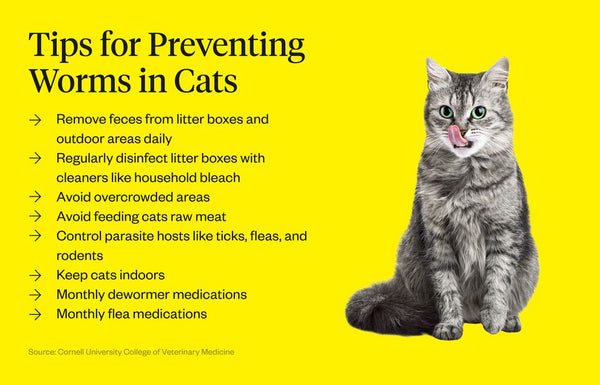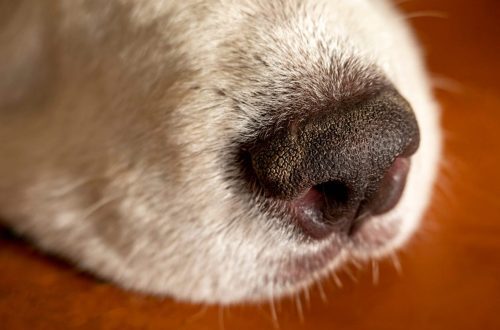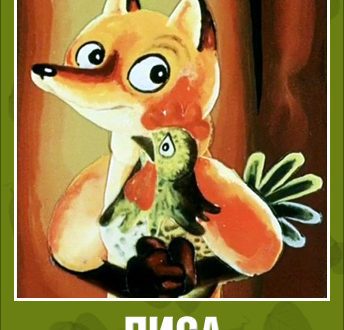
The main symptoms of worms in cats and kittens – prevention and treatment of helminthiasis
One of the most common diseases in cats is helminthiasis – infection of the animal with worms. Today, veterinarians have several types of helminths. When worms are found in cats, it is first of all important to correctly determine the type of parasite that has settled in the body of the animal, which will allow you to correctly prescribe a course of treatment.
Parasites that enter the body of an animal can be found almost everywhere: in grass, raw foods, water, etc., are a potential danger not only to the health of the cat, but also to its owner. Even if an adult cat or kitten is constantly in the house, this does not exclude their infection with helminth eggs, which can be brought in by dirty shoes, clothes, or even unwashed hands.
Contents
Varieties of worms and symptoms of helminthiasis
According to the method of reproduction, size and shape, all helminths divided into 4 main types – roundworm, tape parasite, fluke and liver helminth. Therefore, in order to understand how to treat a cat or kitten for worms, you need to know the enemy by sight.
- tapeworm has a flat shape and can reach up to 70 cm in length. Its body, consisting of segments, contains many larvae. Cestodes in an animal parasitize in the small intestine, causing lack of appetite, vomiting, diarrhea and a sharp decrease in weight. Cats and kittens can become infected with tapeworms by eating river fish, rodents, insects, or by contact with infected relatives.
- Roundworm – a small parasite ranging in size from a couple of millimeters to several cm. In the case of a neglected form of helminthiasis, the parasite reaches 10 cm in length. The roundworm, like its flat relative, parasitizes in the small intestine, and in some cases in the liver, gallbladder or esophagus. The parasite enters the body of the animal through the esophagus or the skin.
- flat fluke – a parasite that affects the tissues of the lungs and liver of a cat. Pulmonary helminth grows in length no more than 10 mm. In the case of pulmonary fluke infestation, the cat or kitten coughs, loses interest in food, vomits foam, and the animal also has a fever and diarrhea.
- Liver worms – the smallest species of parasite no more than 5 mm long. Helminth can destroy the liver, and sometimes settles in the stomach. Symptoms of helminthiasis are accompanied by pain in the abdomen, sudden changes in appetite, vomiting, diarrhea and high fever.
Symptoms of the manifestation of worms in cats will depend on the number of parasites. With a minor invasion, there may be no symptoms at all. Helminths in kittens appear in the same way as in adult animals. But very often, worms can parasitize even in the womb of a pregnant cat, and also indulge in offspring with milk during feeding.
Worms in cats – symptoms and main signs
When an animal is infected with any of the types of helminthiasis, specific symptoms appear depending on the variety of the parasite. At the same time, veterinarians allocate and generalized symptoms the presence of worms in the body of a cat:
- loose stools, alternating with constipation;
- vomiting of blood clots, and in especially advanced cases, helminths;
- the presence of parasites in the feces;
- itching in the anus;
- swelling;
- sharp weight loss;
- sudden changes in appetite;
- cough and breathing problems;
- hair loss;
- lag kittens in development;
- the animal gets tired quickly;
- the mucous membrane acquires a pale yellow color;
- paralysis of the hind limbs.
Very often symptoms of helminthiasis similar to infectious diseases in cats, so correct diagnosis is of great importance. If a sick pet is given drugs for worms, then this can lead to complications of another disease, and sometimes lead to the death of a cat. Accurate diagnosis is carried out only by experienced veterinarians in the study of fecal analysis.
Worms in a kitten are especially dangerous, since a weakening of the immune system of a baby’s fragile body with helminthiasis can cause developmental inhibition, severe anemia, and even death of the animal.
Preventive measures against worms
Helminths most often affect street animals, but domestic cats are not immune from helminthiasis. To prevent the reproduction of worms and minimize the risk of invasion, it is necessary adhere to simple rules of care for pets.
- Don’t let your pet walk down the street. This will avoid contact with sick relatives, mice, fleas and feces left by other animals.
- Shoes are best stored in places inaccessible to cats.
- The rug near the front door must be kept clean at all times.
- Exclude from the diet, animal raw fish and meat, which very often contain helminth larvae.
- Be sure to wash your hands when you come in from the street before petting your pet.
- Check the animal’s coat for fleas, which are carriers of tapeworms.
- Clean the cat litter frequently.
- Do not neglect preventive deworming.
- Preparations for worms should be bought only in specialized pharmacies.
- Anthelmintics for kittens should be used only in accordance with the dosage recommended by the veterinarian.
Treatment of worms in domestic cats
Before starting treatment, it is important correctly identify the type of parasite. Preparations designed to combat hepatic helminths are ineffective for the destruction of flat parasites and vice versa. Avoid broad spectrum drugs as they are highly toxic.
Toxic tablets against worms cause the animal to vomit, diarrhea, feel weak and lethargic. But modern anthelmintic drugs, which are available in various forms – a tablet, suspension or drops are absolutely safe for pets while effectively destroying any kind of helminths.
Deworming of cats – technology
Drugs against helminthiasis are given to the animal in the morning on an empty stomach. It is very important to adhere to the dosage recommended by the manufacturers, which is indicated on the package or in the instructions. In most cases, the dose is calculated according to the weight of the cat and the age of the animal. Often, the drug is mixed into animal feed.
If the pet refuses to take the drug, it is administered by force. The cat or kitten is securely fixed, the head is thrown back up, and the drug is placed in the oral cavity on the root of the tongue. At the same time, saliva begins to stand out profusely, which is the norm. To completely get rid of worms, it is important to ensure that the drug is completely swallowed by the animal. In the treatment of cats, the use of medicines intended for people is unacceptable.
Deworming is carried out in two stages with a break of 2 weeks. Sometimes, in the case of an advanced form of the disease, when the helminths in the animal’s body have a different degree of maturity, treatment can be delayed for a longer period. You need to control how the treatment is going by passing stool tests to the veterinary laboratory. In kittens, helminths can be removed no earlier than 2 weeks of age.
When is deworming contraindicated?
Deworming cats and kittens can be contraindicated in some of the following cases:
- in kittens that are younger than the age recommended in the instructions for the drug;
- in sick or old animals;
- in lactating or pregnant cats.
It is important to understand that the frequent use of helminth tablets in cats can cause pathologies in the liver of the animal. Also, from a huge variety of cat worms, 30 species can be transmitted to humans. In order to avoid unwanted proximity to parasites, it is necessary to observe personal hygiene not only for a person, but also for a pet. At the same time, as a preventive measure, it is recommended at least once a year take antihelminthic drugs to all the inhabitants of the apartment.





